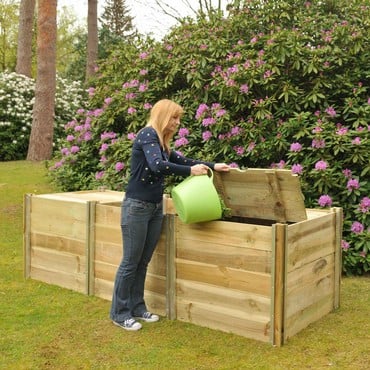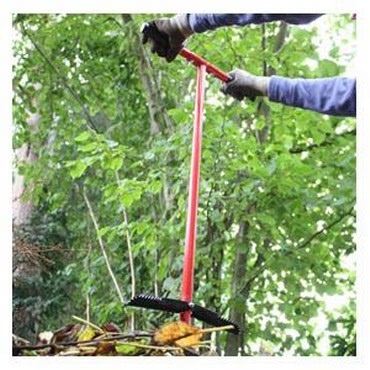What can you put in a compost bin and how does it all work?
Success with composting depends on heat, biology and a good balance of ingredients in your compost bins. Adding in approximately 10cm. layers. ‘Green’ waste (grass, border and hedge trimmings, snipped or shredded woody prunings) heats up steamily, starts to break down rapidly and can be stirred into layers below to speed everything up. ‘Brown’ waste (e.g. shredded paper, packaging and straw) should be added at regular intervals to counteract the wetness of the greenery and will rot down too. Manure from herbivores (chickens, pet rabbits) adds zest to the whole mixture, as does the odd spadeful of soil.
Autumn leaves are best composted on their own in hessian bags or leaf cages, since they rot down more slowly and in a different way.
What should not go in your compost bin?
Moss (which refuses to rot and can therefore be unwittingly spread around)
Seeding weeds or garden thugs (i.e. Verbascums, Fennel) Roots of perennial weeds such as ground elder and bindweed – unless they are thoroughly dried off in the sun first.
Cat and dog (i.e. carnivore) manure.
Meat or cheese kitchen scraps or vegetable waste that has been contaminated by them.
Common problems with home composting
Too dry? Water the heap and/or add more greenery and cover it tightly to keep the heat in.
Smelly? Add more ‘brown’ ingredients, but no grass clippings or kitchen waste for a while. Stir the contents to open it up. Leave the lid off.
Rats? This is a tricky one - they may try to move in if there is a regular source of food nearby (i.e. a bird table or poultry house).
Slugs and snails? No problem. They are doing their bit for the composting process, and at least it keeps them away from your lettuces and hostas.





























